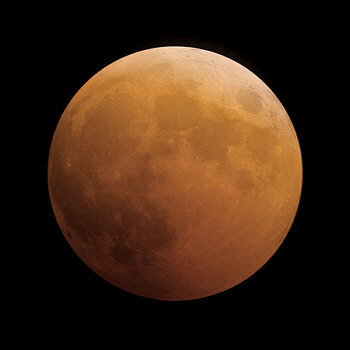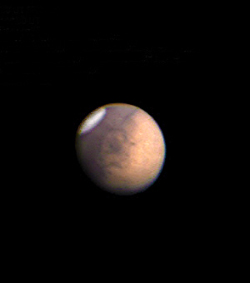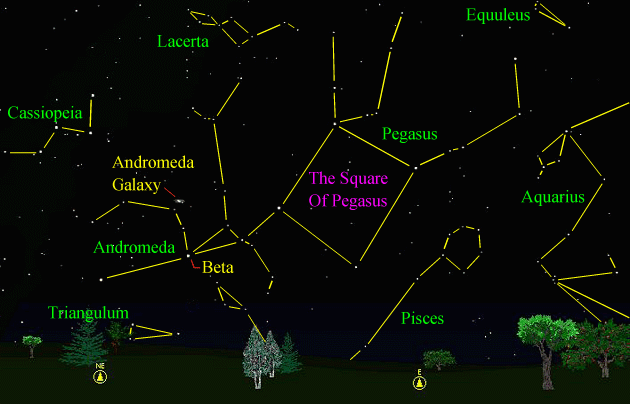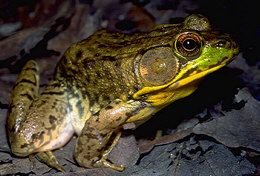The purpose of this feature is to give scout leaders, educators and naturalists an idea of some of the natural events coming up each month. We will try to cover a variety of natural events ranging from sky events to calling periods of amphibians, bird and mammal watching tips, prominent wildflowers and anything else that comes to mind. We will also note prominent constellations appearing over the eastern horizon at mid-evening each month for our area for those who would like to learn the constellations. If you have suggestions for other types of natural information you would like to see added to this calendar, let us know!. Note: You can click on the hyperlinks to learn more about some of the featured items. To return to the Calendar, hit the "back" button on your browser, NOT the "back" button on the web page. All charts are available in a "printer friendly" mode, with black stars on a white background. Left clicking on each chart will take you to a printable black and white image.
Notes and Images From July 2007
You can determine the sex of some species of frogs by comparing the diameter of the tympanum, or eardrum, of the frog to the diameter of its eye. In these species, if the two diameters are approximately the same, the frog is female. If the diameter of the tympanum is larger than the eye, the frog is male. This is a female Green Frog. For an image of a male Green Frog, see the amphibian section below. Sky Events for August 2007: Perseid Meteor Shower: The annual Perseid Meteor Shower occurs on the evening of August 12th and the morning of August 13th. This should be a particularly good display, as one of the predicted peaks for the shower is around 3:00am Central Daylight Time. Also, there will be no moon visible to wash out the sky. Lounge chairs and perhaps a light blanket allow for comfortable viewing (don't set the chairs out ahead of time or they may be wet with dew). Face northeast and expect the most meteors between midnight and dawn. Typically you can see a meteor every few minutes, although the shower rates vary from one year to the next. Getting away from light-polluted city skies will improve your views.
Total Lunar Eclipse: A total lunar eclipse will occur in the early morning hours of August 28th. West coast observers are favored on this eclipse, but in our area we should be able to see the moon set during the total phase. The moon first enters the earth's shadow at 3:51am CDT. Totality begins about one hour later. Shortly thereafter, twilight will begin to lighten the sky. The eclipsed moon will set around 6:00am CDT. in the WSW (azimuth approximately 254 degrees). For photos, a digital camera with a telephoto lens is helpful, as it's hard to predict exposure times from one eclipse to the next. Also, it may be necessary to mount the camera on a clock-driven mount to get sharp images with multiple-second exposures. The best eclipse shots are usually planned ahead of time, with a previously chosen interesting foreground (you can use a compass and the azimuth above to plan your shot).
Evening Sky: Jupiter is is the brightest star-like object in the southern sky after sunset. Look for it due south at dusk at the beginning of the month. Morning Sky: Mars rises about 12:40am near the Pleiades in the constellation Taurus. It is getting quite bright now, and looks like a glowing red coal in the pre-dawn sky. It will continue to brighten as the earth draws near. Mars will be closest to us on December 18th of this year, when it will be about 54,800,000 miles away. We had a pretty look at Mars from Roan Mountain in the early morning hours of July 31st.
A false e-mail about Mars is again making the rounds. On August 27, 2003, Mars and the earth approached each other to within 34,600,000 miles. I have many fond memories of observing and photographing Mars during that time, and of observing the tiny Martian moons Deimos and Phobos. The e-mail is loosely based on this August, 2003 opposition of Mars. Unfortunately, it makes fantastic claims. According to the e-mail, in August of 2007 Mars will appear to the naked eye as large as our own moon. It ends with a heart-felt appeal to gather your children around you to see this once-in-a-lifetime event. First of all, the close August opposition of Mars was four years ago - it's time to move on. Second, let's do the math - Mars is about twice the diameter of our moon. Therefore to appear as large as our moon to the naked eye, Mars would have to be only twice as far away as our moon, or about 500,000 miles away. If Mars ever gets this close, forget about observing it and get your affairs in order - something is seriously wrong with our Solar System!
Constellations: The views below show the sky looking east at 9:50pm CDT on August 15th. The first view shows the sky with the constellation outlined and names depicted. Star and planet names are in yellow. Constellation names are in green. The second view shows the same scene without labels. New constellations this months are Pegasus, the Flying Horse, Andromeda, Princess Andromeda, Triangulum, the Triangle, Pisces, the Fishes, and Aquarius, the Water Bearer.
Find the "Square of Pegasus" and work your way outward from it to the constellations around it. Look above beta Andromedae (see the chart below) and see if you can pick out the faint glow of the Andromeda Galaxy, over 2 million light years away! When you look at this galaxy you're seeing light that began its journey to us in the Pleistocene epoch. To get the best look, wait until the galaxy climbs high in the sky. The Andromeda Galaxy was first shown on star charts prepared in 905AD by the Persian astronomer, Al Sufi, and was referred to as the "Little Cloud." That well describes its appearance to the naked eye, and in dark skies it's not hard to spot. City dwellers may need binoculars to pick it out. Simon Marius, in 1610, was among the first to observe the Andromeda Galaxy through a small telescope. He compared its soft glow to "the light of a candle shining through horn." In dark skies, those using small telescopes may pick out the small satellite galaxies M32 (above and left of the nucleus of M31 in the above image) and NGC 205 (below).
On Learning the Constellations: We advise learning a few constellations each month, and then following them through the seasons. Once you associate a particular constellation coming over the eastern horizon at a certain time of year, you may start thinking about it like an old friend, looking forward to its arrival each season. The stars in the evening scene above, for instance, will always be in the same place relative to the horizon at the same time and date each August. Of course, the planets do move slowly through the constellations, but with practice you will learn to identify them from their appearance. In particular, learn the brightest stars for they will guide you to the fainter stars. Once you can locate the more prominent constellations, you can "branch out" to other constellations around them. It may take you a little while to get a sense of scale, to translate what you see on the computer screen or what you see on the page of a book to what you see in the sky. Look for patterns, like the stars that make up the "Square of Pegasus." The earth's rotation causes the constellations to appear to
move across the sky just as the sun and the moon appear to do. If you go
outside earlier than the time shown on the charts, the constellations will be
lower to the eastern horizon. If you observe later, they will have climbed
higher. As each season progresses, the earth's motion around the sun
causes the constellations to appear a little farther towards the west each
night for any given time of night. If you want to see where the
constellations in the above figures will be on September 15th at 9:50pm CDT, you
can stay up till 11:50pm CDT on August 15th and get a preview. The westward
motion of the constellations is equivalent to two hours per month. A good book to learn the constellations is H. A. Rey's classic, The Stars, A New Way to See Them. Rey's depictions of the constellations and witty commentary are terrific. A good general reference book on astronomy is the Peterson Field Guide, A Field Guide to the Stars and Planets, by Pasachoff. The book retails for around $14.00. My favorite books about astronomers are Richard Preston's First Light, and the wonderful Starlight Nights, by Leslie Peltier. A good beginners software program for learning the night sky is the Starry Night Beginner program. Visit the Starry Night web site at www.starrynight.com The program retails for around $30.00 and contains a wealth of information.
Amphibians:
Listen for Cope's Gray Treefrogs, Gray Treefrogs, Bird-Voiced Treefrogs, Green Treefrogs and Barking Treefrogs. Northern Cricket Frogs and Southern Cricket Frogs are still calling, as are Bullfrogs and Green Frogs. Spring Peepers have a much higher, shorter call this time of year. On cooler nights listen for American Toads. After heavy rains listen for the high, insect-like call of the Eastern Narrowmouth Toad and the strange-sounding Eastern Spadefoot.
Archives (Remember to use the back button on your browser, NOT the back button on the web page!) Natural Calendar February 2007 Natural Calendar December 2006 Natural Calendar November 2006 Natural Calendar September 2006 Natural Calendar February 2006
Natural Calendar
December 2005
Natural Calendar
November 2005
Natural Calendar
September 2005
Natural Calendar
February 2005
Natural Calendar
December 2004
Natural Calendar
November 2004
Natural Calendar
September 2004
Natural Calendar
February 2004
Natural Calendar
December 2003
Natural Calendar
November 2003
Natural Calendar
September 2003 Natural Calendar February 2003 Natural Calendar December 2002 Natural Calendar November 2002 Nature Notes Archives: Nature Notes was a page we published in 2001 and 2002 containing our observations about everything from the northern lights display of November 2001 to frog and salamander egg masses. Night scenes prepared with Starry Night Pro software All images and recordings © 2007 Leaps
|






